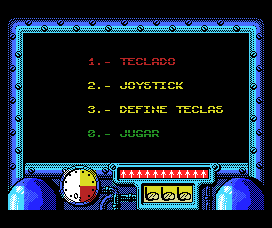Titanic for MSX
MSXTitanic MSX Disk version, containing both parts of the original game.
Game controls in browser
Show Controller & SystemClick on play MSX game now button first to load the game, you can change the settings by clicking on the Settings icon / Help & Settings menu. Control keys:
Titanic
Online version of Titanic for MSX. Titanic is an scuba-diving action game developed by Spanish software house Topo Soft in 1988 for 8-bit home computers ZX Spectrum, Amstrad CPC and MXS. The game was later ported on PC DOS with two extra stages, VGA graphics and AdLib sounds. Titanic is an exploration game which is divided into two parts. In the first part, you must find the Titanic by travelling through a network of caves. In the second part, you explore inside the ship itself, trying to find a way of opening the safe which is located somewhere within it. Contact with some plants and fish depletes your oxygen, although other types of fish will kill you instantly and send you right back to the start...
Game details
Other platforms online 3
You can play Titanic online also in a versions for75%
rating (2 users voted)
MSX 1/2 Home Computers
Online emulated version of Titanic was originally developed for the MSX a standardized home computer architecture,
announced by Microsoft and ASCII Corporation in 1983. It was initially conceived by Microsoft as a product for the Eastern sector, and jointly marketed by Kazuhiko Nishi,
then vice-president at Microsoft and director at ASCII Corporation. Microsoft and Nishi conceived the project as an attempt to create unified standards among various
home computing system manufacturers of the period, in the same fashion as the VHS standard for home video tape machines.
MSX systems were popular in Japan and several other countries. Sony was the primary manufacturer of MSX systems at the time of release, and throughout most of the
products lifespan, producing more units than any other manufacturer. Eventually 5 million MSX-based units were sold in Japan alone.
Nishi's standard was built around the Spectravideo SV-328 computer. The standard consisted primarily of several off-the-shelf parts; the main CPU was a 3.58 MHz Zilog Z80, the Texas Instruments TMS9918 graphics chip with 16 KB of dedicated VRAM, the sound and partial I/O support was provided by the AY-3-8910 chip manufactured by General Instrument, and an Intel 8255 Programmable Peripheral Interface chip was used for the parallel I/O such as the keyboard.






